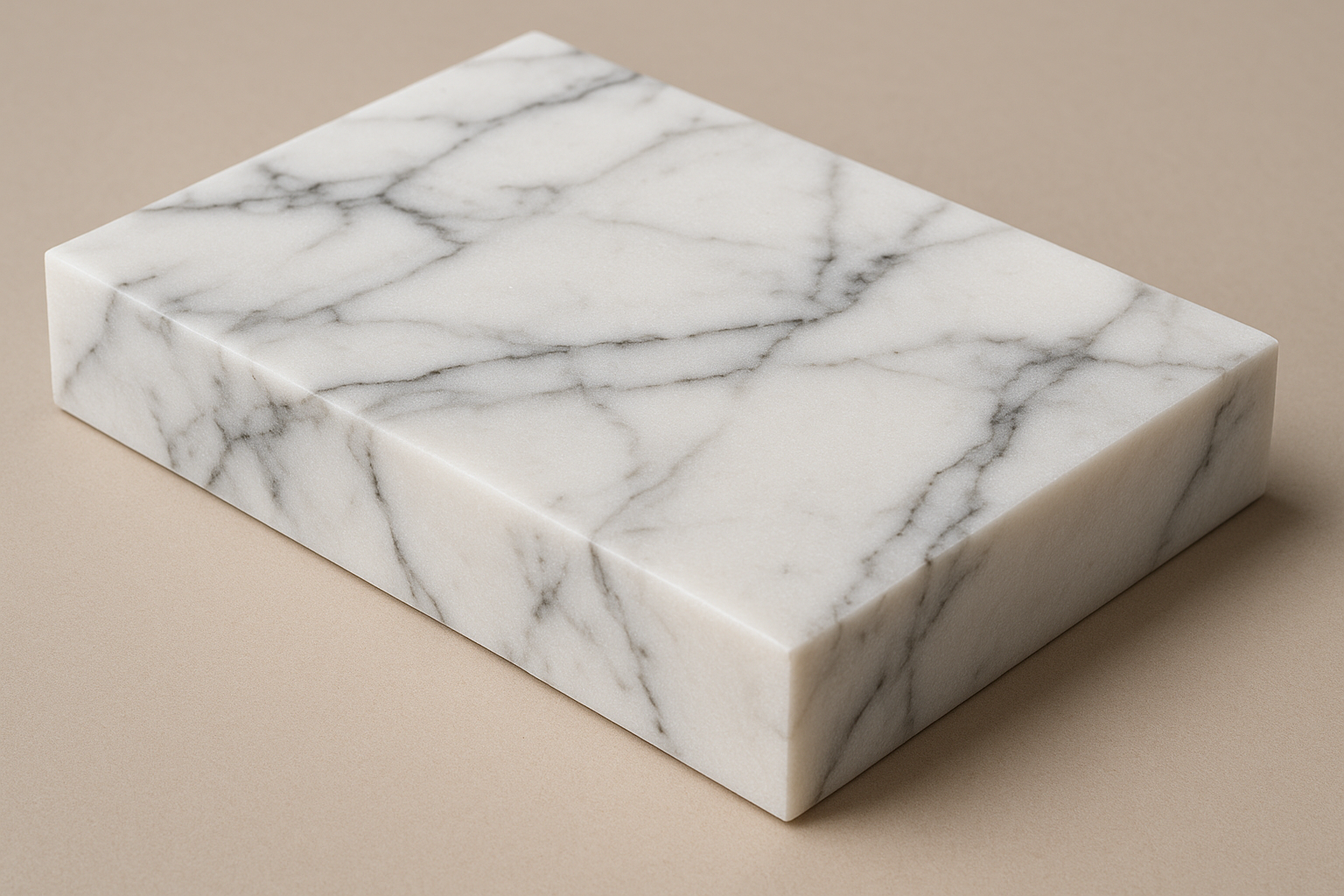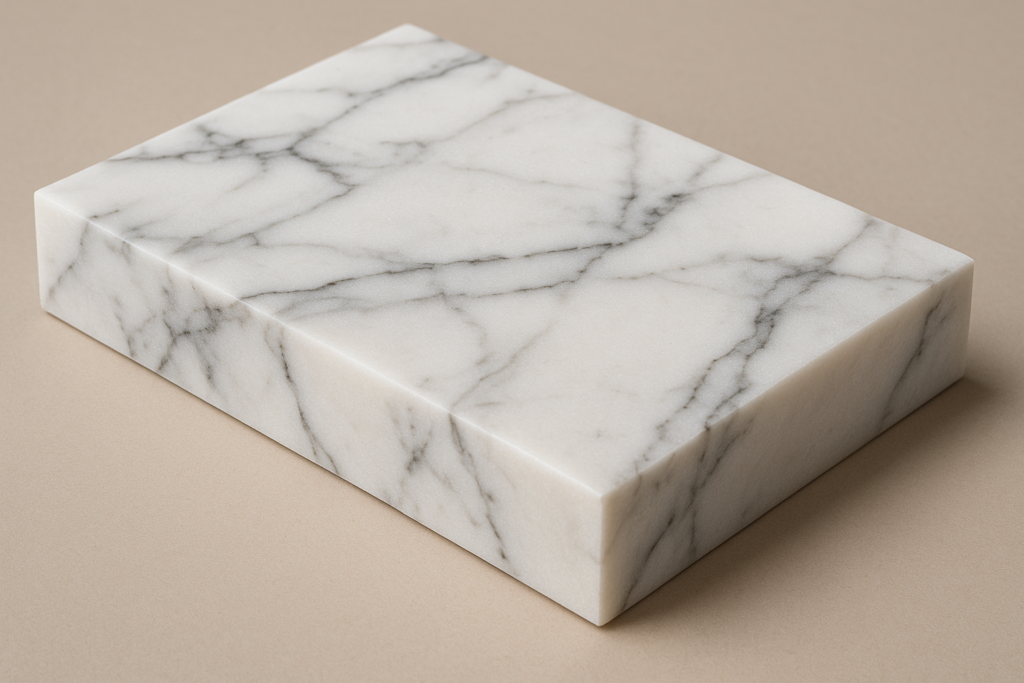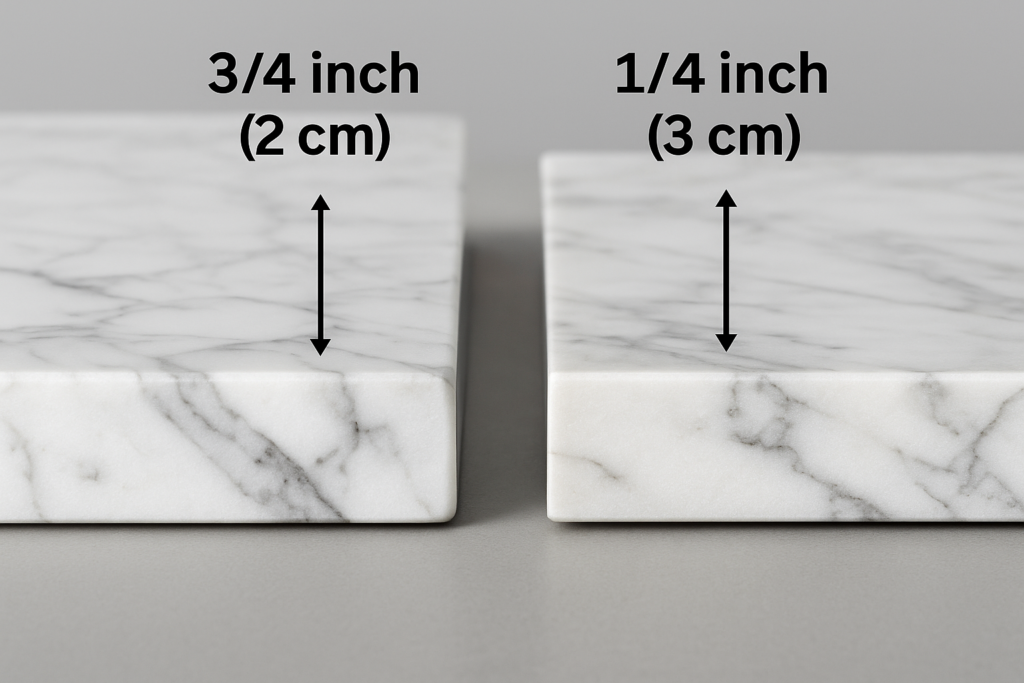
When selecting a marble slab for your home or commercial project, one of the most critical yet often overlooked decisions is choosing the right thickness.
When selecting a marble slab for your home or commercial project, one of the most critical yet often overlooked decisions is choosing the right thickness. The thickness of a marble slab not only affects its appearance and durability but also plays a key role in its cost, weight, and suitability for different applications—from countertops to flooring and wall cladding.
This guide explores standard marble slab thickness options, their benefits, and how to choose the ideal one for your needs. Whether you’re designing a marble slab countertop, backsplash, or flooring, understanding thickness is essential for a long-lasting and aesthetically pleasing result.

Understanding Marble Slab Thickness
Marble slabs are available in a range of thicknesses, with the most common being:
- 2 cm (approximately 3/4 inch)
- 3 cm (approximately 1 1/4 inch)
These two options dominate the global market, though custom thicknesses—such as 4 cm or even 5 cm—can be fabricated for special applications or layered installations.
Why Does Marble Slab Thickness Matter?
The thickness of a marble slab affects many practical and aesthetic aspects, including:
- Structural stability
- Installation method
- Weight and transportation
- Edge profiles and finishes
- Marble slab cost and pricing
- Seam visibility in countertops
- Design appeal and luxuriousness
The thicker the slab, the stronger and more durable it typically is. However, thicker slabs are also more expensive and heavier, requiring reinforced support and experienced installers.

Standard Marble Slab Thickness Options
2 cm Marble Slabs (3/4 inch)
This is the most popular choice in European markets and for interior applications.
Best For:
- Wall cladding
- Bathroom vanities
- Vertical applications
- Light-use countertops
Pros:
- Lighter and easier to transport
- More affordable
- Ideal for decorative features and backsplashes
Cons:
- Requires plywood substrate for countertops
- More fragile than thicker options
3 cm Marble Slabs (1 1/4 inch)
Standard in the U.S. and preferred for marble slab for kitchen countertops and island installations.
Best For:
- Kitchen countertops
- Worktops
- Furniture tops
- Heavy-traffic areas
Pros:
- Greater strength and durability
- Does not require plywood backing
- Offers bold edge profiles (e.g., ogee, bullnose)
Cons:
- Heavier and more costly
- May need reinforced cabinetry
How Thickness Impacts Cost, Weight, and Installation
Marble Slab Cost
- 2 cm slabs typically cost less per square foot due to reduced material volume.
- 3 cm slabs are pricier but save on installation time as no additional substrate is needed.
Marble Slab Weight
- 2 cm slab: ~18–20 lbs per square foot
- 3 cm slab: ~27–30 lbs per square foot
Heavier slabs demand sturdier handling during marble slab fabrication and installation.
Choosing Thickness Based on Application
| Application | Recommended Thickness |
|---|---|
| Kitchen countertops | 3 cm |
| Bathroom vanities | 2 cm or 3 cm |
| Marble slab backsplash | 2 cm |
| Flooring | 2 cm (light traffic), 3 cm (heavy traffic) |
| Wall cladding | 2 cm |
| Fireplace surrounds | 2 cm or 3 cm |
| Tabletops | 3 cm or thicker |
Always coordinate with your marble slab supplier or installer to confirm load-bearing capabilities and design preferences.
Design Considerations for Thickness
Edge Profiles
Thicker slabs allow for more intricate and luxurious marble slab edge profiles, including:
- Beveled
- Bullnose
- Ogee
- Waterfall
With 2 cm slabs, a laminated edge (doubling the thickness at the edge) may be used to simulate a thicker look.
Marble Slab Finishes
Polished, honed, and leathered finishes are available in both 2 cm and 3 cm options. However, polished marble slabs tend to appear more reflective and bold in thicker formats.
Maintenance and Durability
Sealing and Maintenance
All natural marble slabs, regardless of thickness, should be sealed to protect against stains, etching, and moisture. Thicker slabs may hold up better to wear but still require regular marble slab cleaning and marble slab maintenance.
Durability Factors
- Thicker slabs resist cracking during fabrication and transport.
- Engineered support may be needed for overhangs or floating vanities, especially with thinner slabs.
Frequently Asked Questions
Can I use a 2 cm marble slab for kitchen countertops?
Yes, but it will need a plywood backing and careful edge lamination for strength and appearance.
Are 3 cm marble slabs more durable?
Yes. The added thickness provides better impact resistance and long-term durability—especially in high-traffic or wet areas like marble slab for bathroom applications.
What’s the best thickness for flooring?
2 cm is generally sufficient for residential use. For commercial spaces, 3 cm slabs may be preferred for long-term durability.
Final Thoughts: Which Thickness Is Best for You?
The choice between 2 cm and 3 cm marble slab thickness depends on your project’s needs, budget, design intent, and structural support.
Choose 2 cm when:
- You’re cladding walls or vertical surfaces
- Budget is a top concern
- You’re working on lower-impact applications
Choose 3 cm when:
- You need strength and visual weight
- You’re installing kitchen countertops
- You want bold edge details without lamination
Both options can be used for a wide range of applications—from marble slab flooring to wall cladding, furniture tops, and backsplashes.

